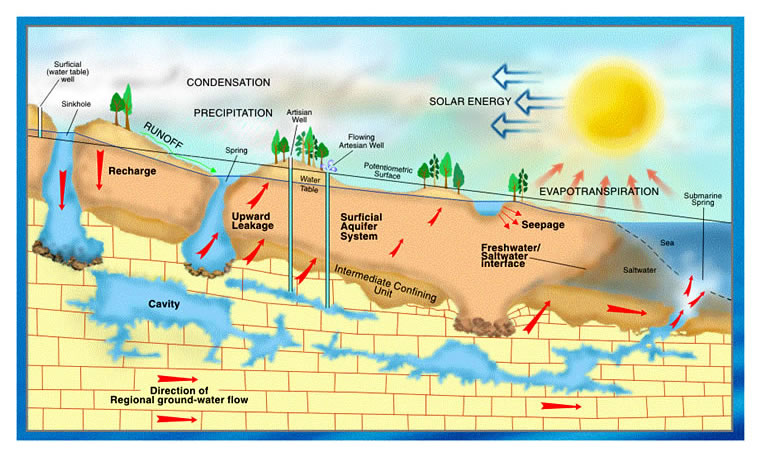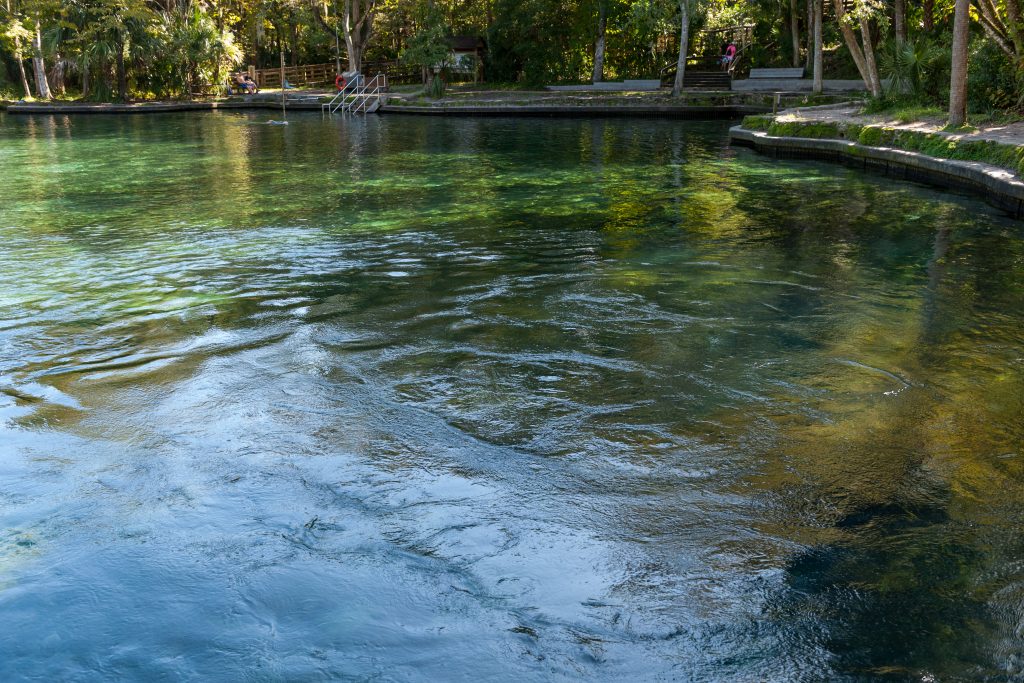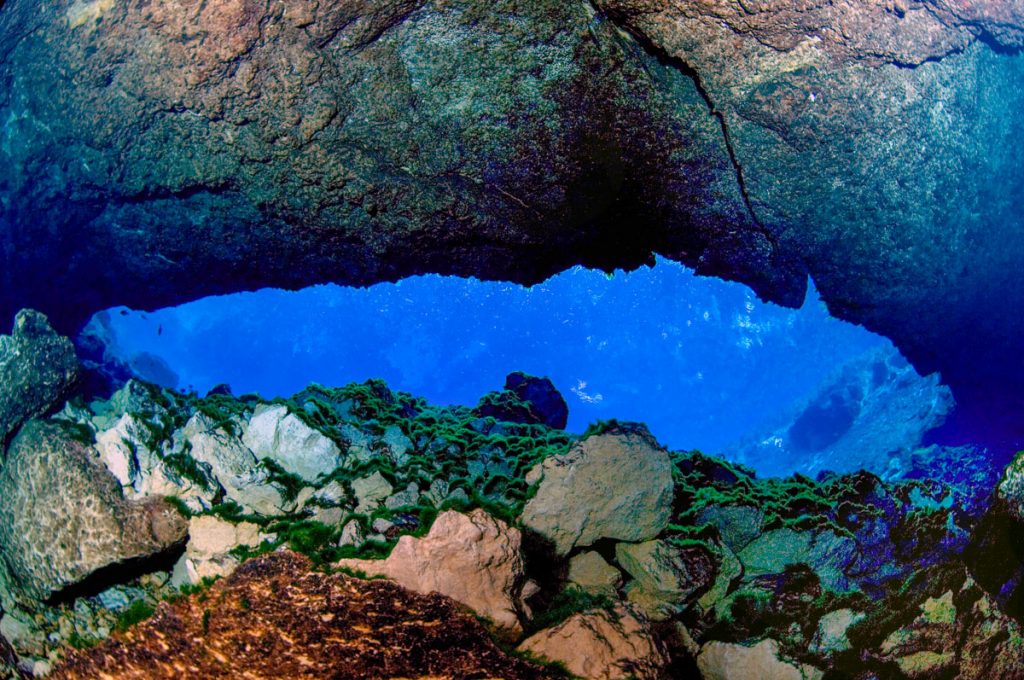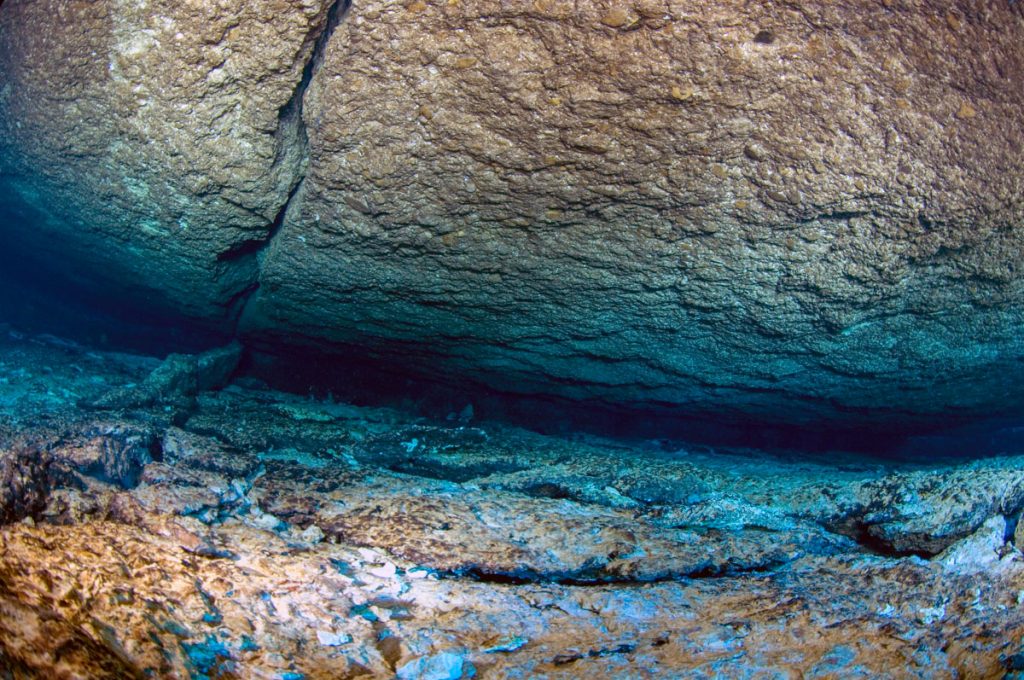For most springs within the St. Johns River Water Management District, the groundwater that flows is discharged from the Floridan aquifer system, which is also the source of water for most municipal supplies and private wells in the District. The source of recharge to the Floridan aquifer is rainfall within the District and adjacent areas. The amount of water available as recharge to the Floridan aquifer is that part of rainfall, after losses to runoff and evapotranspiration, which infiltrates to the water table and continues to move downward to the aquifer system.
Rainfall, made slightly acidic by the carbon dioxide that it picks up from the atmosphere, enters the Floridan aquifer and slowly dissolves fractures, channels and caves in the limestone and dolomite, forming complex underground flow systems. Water moving through small pore spaces travels slowly (on a scale of years), while water that travels through channels and caves can move rapidly (on a scale of days to weeks). Where the water creates large cavities, the overlying sediments may collapse, forming a sinkhole or a spring. Karst terrain refers to areas, generally underlain by soluble rock such as limestone and dolomite, where the topography is formed and modified by the dissolution of the rock, and which may be characterized by features such as sinkholes, sinking streams, closed depressions, underground drainage, caves, and a lack of surface drainage systems.
A spring can be defined as a place where groundwater flows naturally onto the land surface or into a body of surface water. A spring run refers to a body of flowing water that originates from a spring or whose primary source of water is from a spring or group of spring vents under average rainfall conditions. A spring recharge basin, or a springshed, refers to the area within the groundwater basin that contributes to the discharge of a spring.
There are two general types of springs in Florida, karst springs (artesian springs) and seeps (water table springs). Karst springs form when groundwater discharges to the surface through a karst opening. The vast majority of Florida’s springs are karst springs. Seeps result as infiltrating rainwater in permeable sediments encounters a layer of much less permeable deposits, forcing the water to move laterally. Eventually, the water may reach the surface in a lower-lying area, forming a seep. Seeps may also form in karst areas when water flow from the aquifer is more diffuse.
A spring’s occurrence depends on the nature and relationships among topography, underlying geologic strata, and water levels in the aquifer systems. Most springs in the District occur in discharge areas of the Floridan aquifer where limestone is at or near land surface, or where the sediments overlying the Floridan limestone have been breached. The majority of the springs in the District are located along the major river systems of the St. Johns, Ocklawaha, and Wekiva rivers.
Anatomy of a spring
A spring is “a point of focused discharge of groundwater” — it is an area on the earth’s surface where groundwater discharges to become surface water.
Some springs are large enough to create a spring-run stream, which is a distinct river system fed by the flow of the spring. Some spring-run streams in the District include Silver River, Alexander Spring Creek and Wekiva River. Other springs (such as Blue Spring, Welaka Spring, Green Cove Spring) contribute to the flow of the St. Johns River and other large rivers.
Spring run habitats
Important habitats (living and feeding space for aquatic fauna) in spring runs include beds of submerged aquatic vegetation (also known as SAV) and submerged trees (known as snags). These provide shelter and feeding areas for many species of invertebrates, fish, turtles, birds and mammals.









